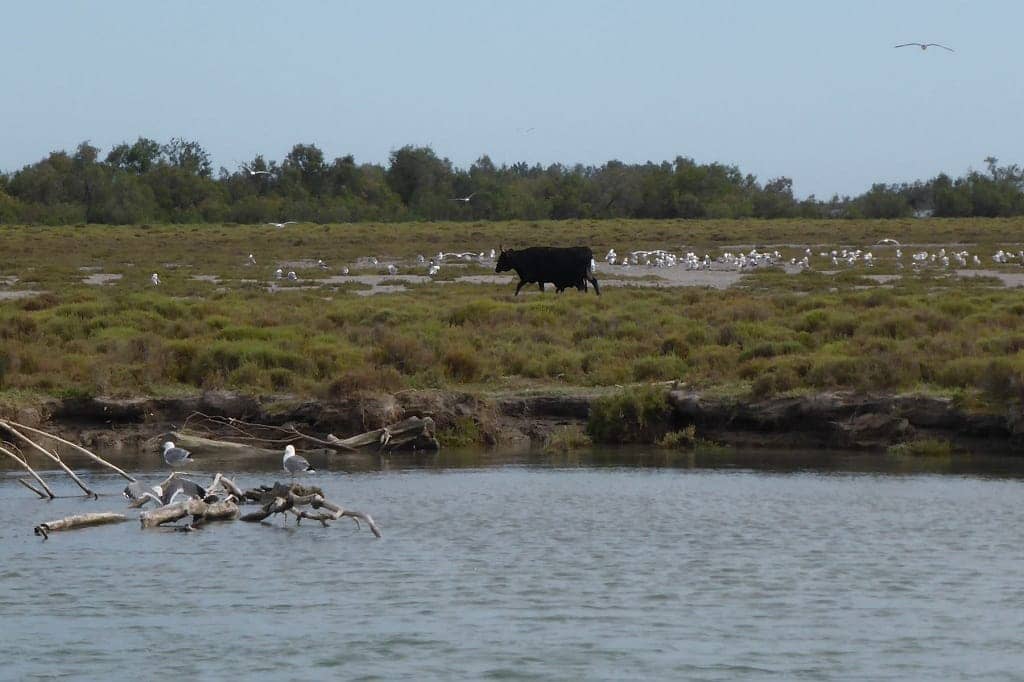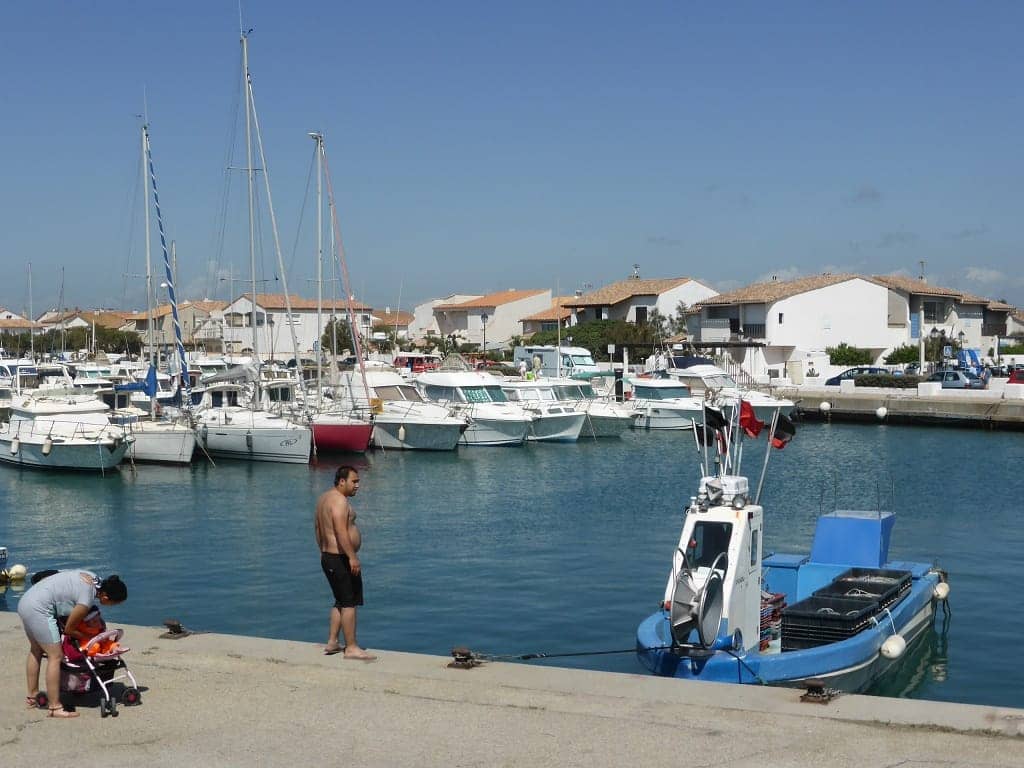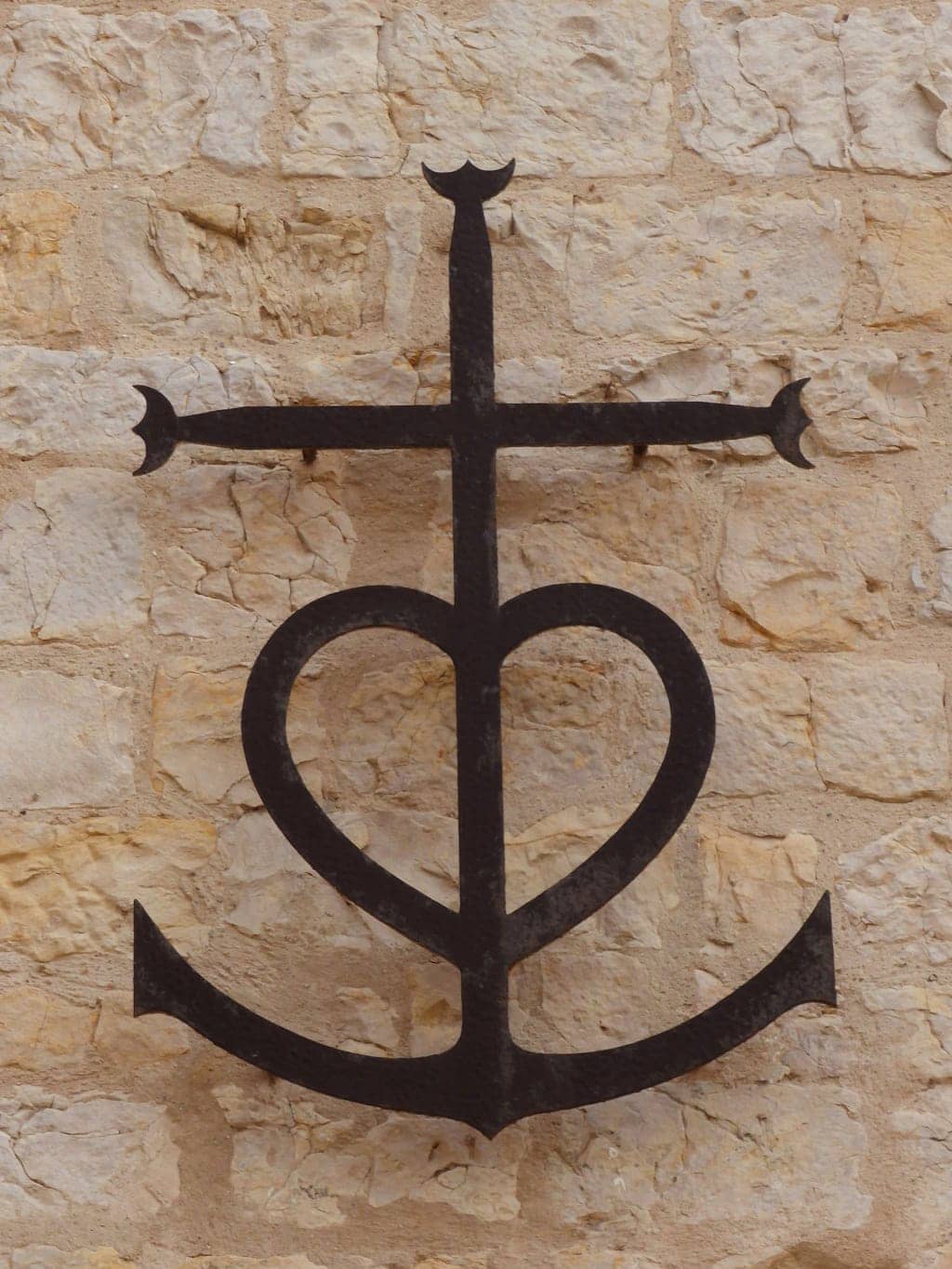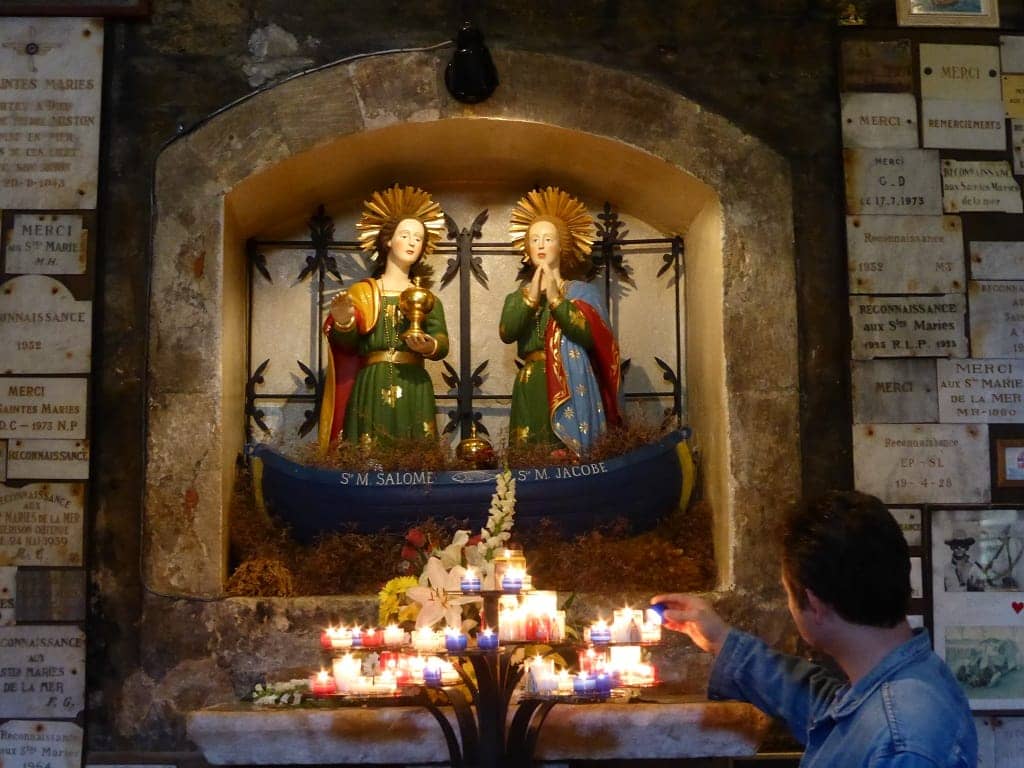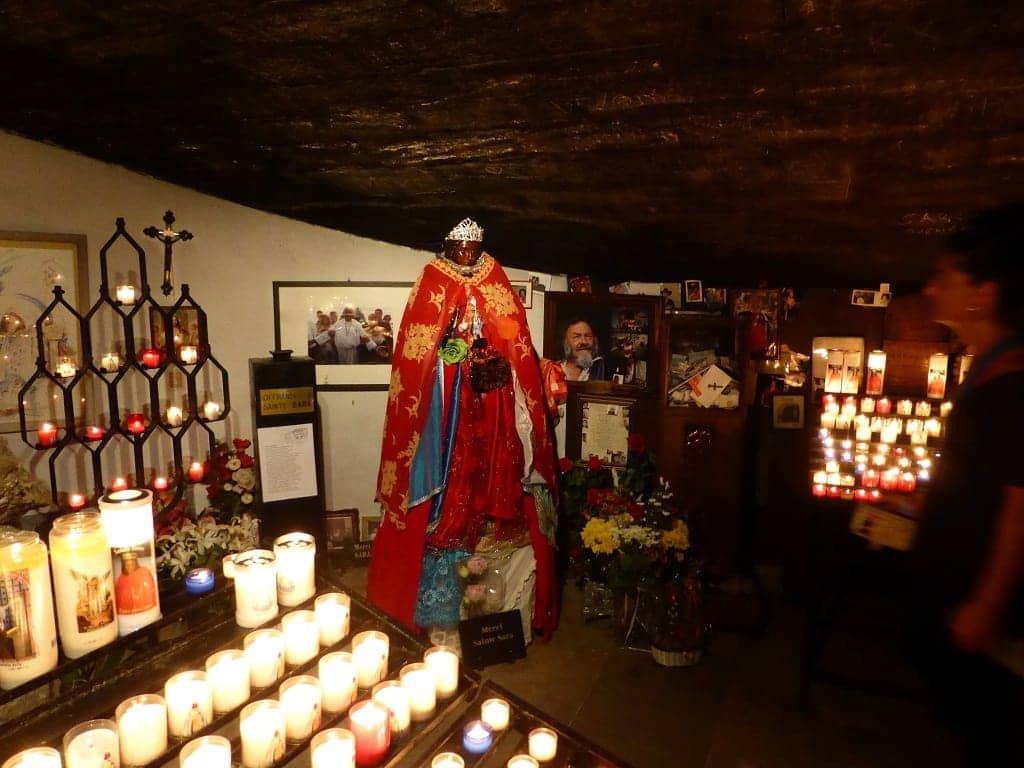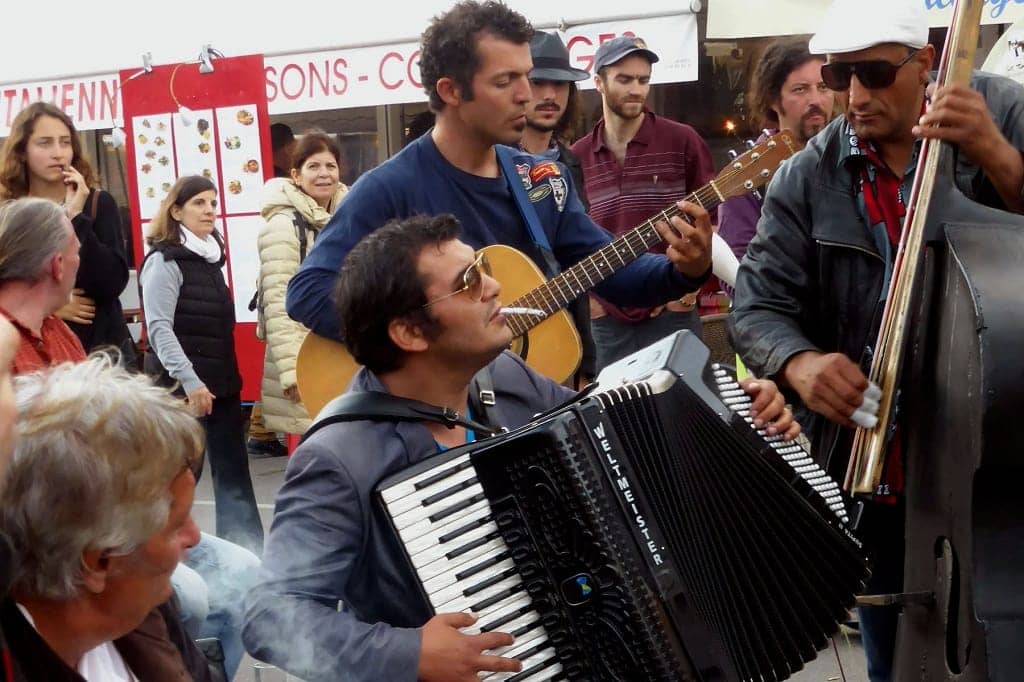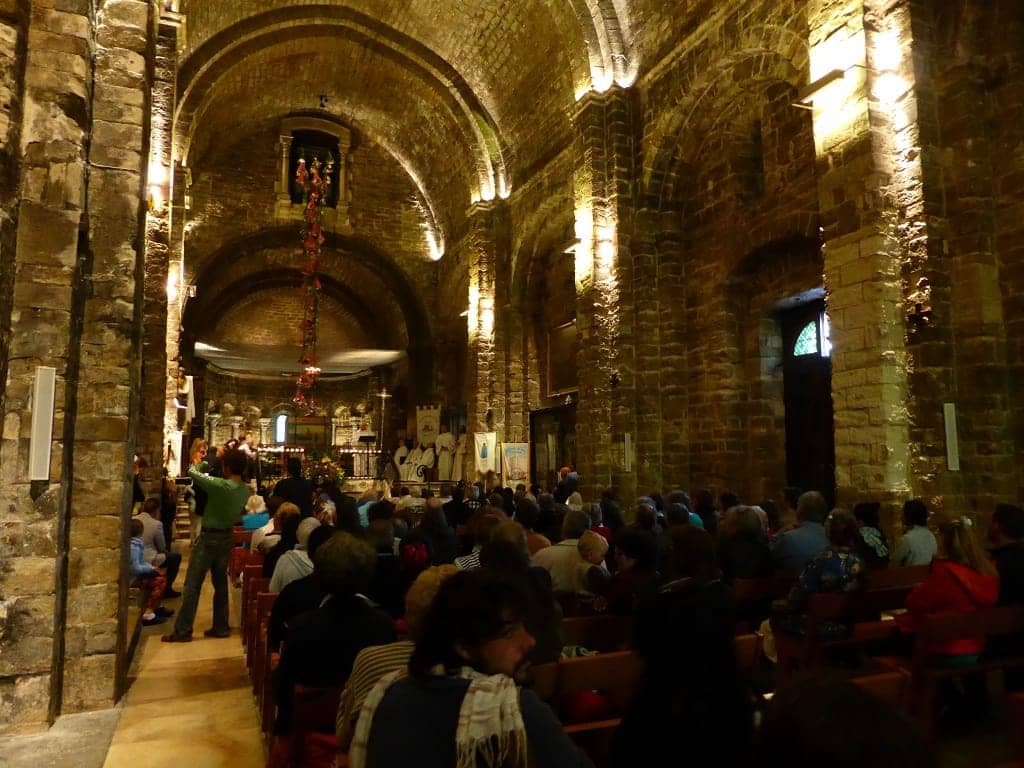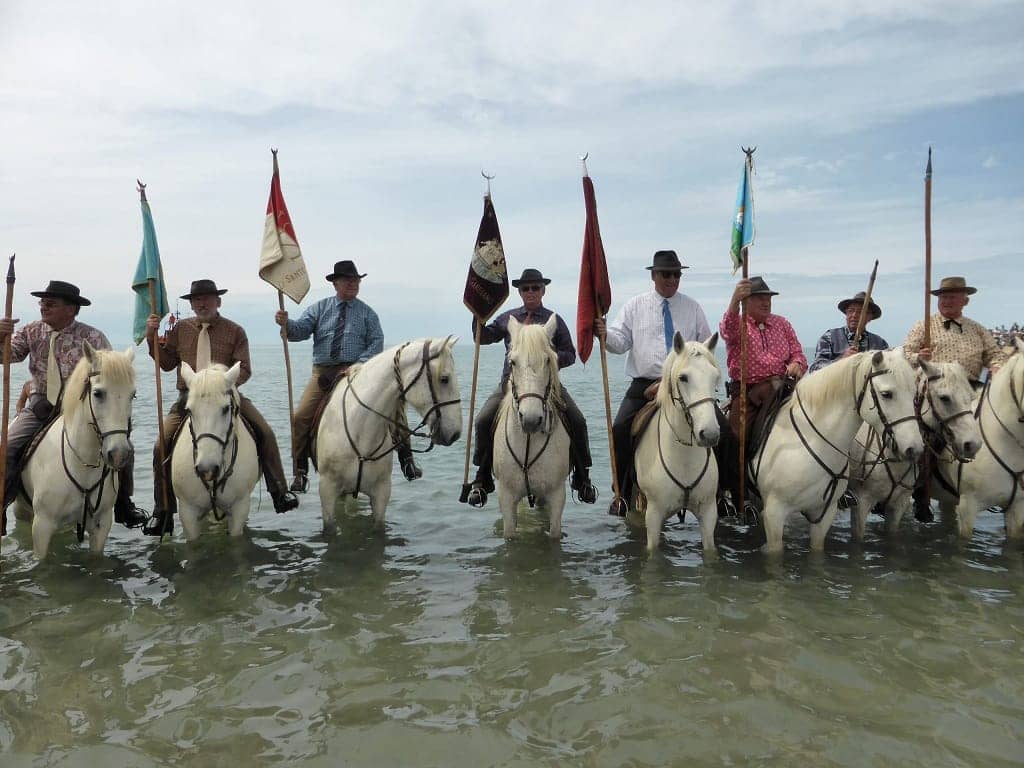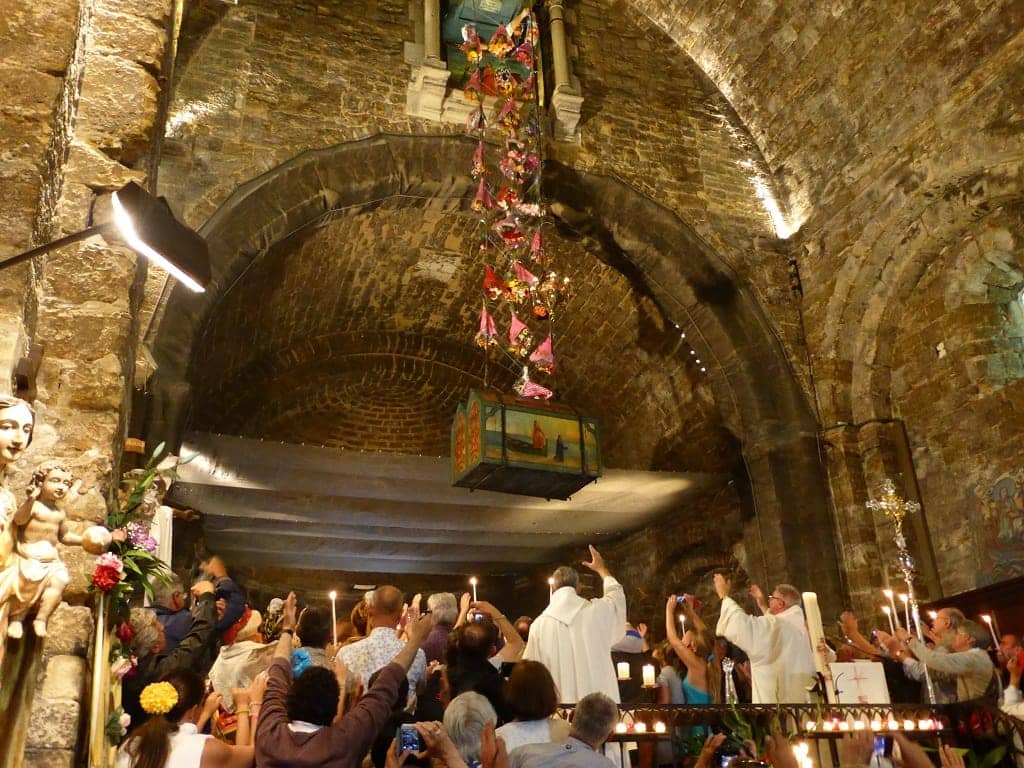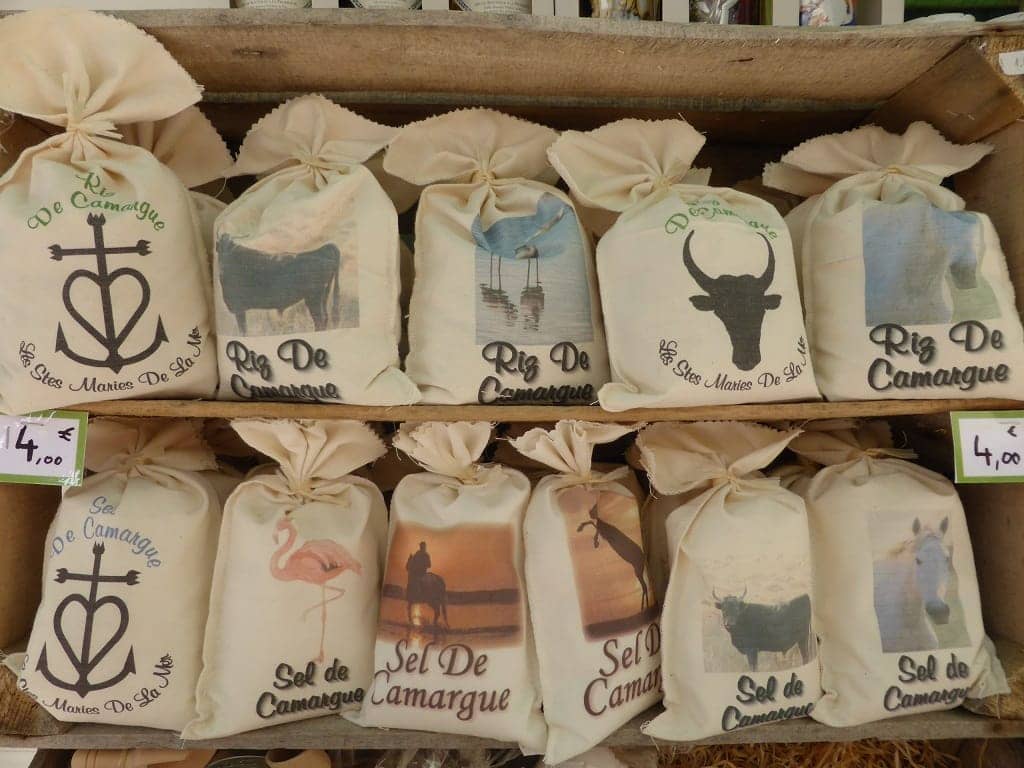Gypsy's Pilgrimage, Le Pèlerinage des Gitans
In the marshes of the Camargue, on the seashore, the sleepy town of Les Saintes-Maries-de-la-Mer is situated. Every year in May, thousands of Roma from around the world gather here to venerate their Saint, Sarah the Black.
The natural park of Camargue, a unique part of Provence, has a triangular shape - bounded by the city of Arles in the north, the Great Rhône in the east and the Little Rhône in the west. The south is washed by the Mediterranean Sea.
It is a strange region, all on the water. Lakes, ponds, swamps and salt lagoons form a colourful mosaic of blue spots on the map. In many places, the sea is enclosed in reservoirs, on the edges of which salt accumulates and creates white blocks. When the waves hit the barriers hard, pieces of salt fly in the wind like snowflakes... The river delta is home to more than 400 bird species, and it is also used by the flocks migrating to Africa for the winter.
The inhabitants live here as they did a hundred years ago; grow rice, breed bulls and ride horses. Gardians, French cowboys, wear hats, corduroy trousers and high boots, and when you see them driving a herd of cattle, you feel like in the Wild West.
In the middle of the swamps, on the seashore, an unobtrusive, quiet town of Les Saintes-Maries-de-la-Mer lies, famous for its Gypsy's pilgrimage. Every year on May 24 and 25, thousands of Romani people from around the world gather here to venerate their Saint, Sarah the Black.
According to the Catholic version, the three Marys - Magdalena, Jacobe and Salome were the first to discover the empty tomb of Jesus and to report on his resurrection. Like the other followers of his teachings, they were persecuted and expelled from the Holy Land. They managed to escape and took with them the black Egyptian maid Sarah and travelled across the sea. Providence led their boat safely to the shores of southern France, to the fort called Oppidum-Râ. The place was later known as Notre-Dame-de-Ratis (Our Lady of the Boat), then Notre-Dame-de-la-Mer (Our Lady of the Sea) and since 1838 it has been Les Saintes-Maries-de-la-Mer, the Saints Marys of the Sea.
According to the Romani version, Sara la Kali lived in Camargue. One day she saw a boat approaching. When it overturned on a stormy sea, she ran into the water, threw her cloak on the waves and, using it as a raft, rescued Marys. After they baptized her, she kept spreading goodness and Christianity among people. However, the Vatican never recognized Sarah as a saint.
Already in Arles I understood that it was going to be tough. Along with me, a large group of people got in the bus and immediately spread across the whole vehicle; they were shouting at each other from one side to another and smelling like a hundred devils. The children dangled from the grab bars like Tarzan or played chase games, though it seems impossible in such a small bus. The driver didn't look very enthusiastic and regularly checked the situation with anxious glances in the rear-view mirror.
My neighbour, a resident of Les Saintes-Maries-de-la-Mer, quickly understood that I didn't belong to the group. She leaned over to me and whispered that I should not take out anything valuable, nor money or documents. "Even in daylight they steal like magpies," she added, and showed me how to hide a cell phone under the T-shirt. I started to get worried. "And by no means go out alone in the evening," she warned me at the end, "they have knives and use them. Every year somebody gets stabbed here...”
Now I was badly shaken.
Although it was only Thursday and the festivity was to take place on Saturday, the road was so blocked by the caravans that the bus couldn´t continue to the centre; the driver happily opened the doors and got rid of us.
Hundreds of white ,,boxes” lined the whole village and made a bizarre contrast with herons standing in the marshes in the background. The campers stood everywhere, not only in the campsite, but also in the streets where cars are usually parked. Some of them were luxurious, but the nomadic lifestyle has not changed much. Many had dogs tied to vehicles. The women cooked outside, in the middle of drying clothes hanging around; and as the mobile houses weren’t connected to the sewer; men calmly urinated on the lawn not far from the cookers. The smell of dinner blended sharply with intense urine odour. Raise the hat to locals who are able to withstand such an invasion.
At the hotel, they warned me not to take money with me and not to stay out after the darkness. So I locked my wallet in the safe, put a five-euro banknote in the camera case and hid it under the trench coat which made me look pregnant. I could only hope they would respect the future mother J. Then I went out.
These tourists probably don't bring much money; from behind the first corner a woman, looking like a hundred-year-old Indian, leapt out with an outstretched hand like a jack-in-a-box. From one restaurant I heard the familiar song Dja more, dja more; in another one a group of violinists played. The square in front of the church was busy; women sat on the stairs and chatted, while children were running around and men drinking. Nevertheless, the evening passed in a calm spirit.
On Friday morning the number of the Roma increased. They came mainly from France, Spain, Germany, Italy, but also from various parts of the Balkans, Hungary and Slovakia. Pilgrimage is an opportunity to meet family and friends from all over the world. It was a varied mix of people. I saw women as beautiful and passionate as Carmen. But also the old crones, which in appearance and voice resembled a man. Polite, smiling grandmothers and cheeky mothers of five children who ruthlessly jostled and jumped the queues. Typical greybeards in a hat and unshaved vajdas (leaders). Children in arms, strollers and running around. Folk with a glass eye, black teeth or few teeth left. Clean, well-groomed, and dirty like a pig. Arrogant as well as those who happened to bump into me while I was taking pictures, and then apologized for five minutes. People are different…
Girls wore mostly floral overalls and long skirts, especially bright green and pink. As I have noticed in a special outdoor market for this occasion, the more glaring the better. But the hit of the summer was a sports jacket decorated with rhinestones, which looked like a bathrobe. Men preferred polyester "Adidas" windbreakers.
Some scowled at me, others asked for money. Women tried to convince me to buy the badge pins with Sara. One with a hateful look, stinking like a Maltese brothel, was disgustingly persistent. She jumped at me every time I walked by, pulled my hand, wishing to read my future and receive some cash. I couldn't understand her lisping accent; but when I refused her, from the tone she used I assumed she cursed not only me but at least five next generations of our family.
The main attraction of the village is the Church of Notre-Dame-de-la-Mer, Our Lady of the Sea, preserving precious relics. It looks like a fortress, because it was built in the Middle Ages to provide protection against pirates. Above the entrance, there is the original Camargue Cross, representing three key Christian values: the cross for faith, the anchor for hope and the heart for love.
In the left alcove of the main nave, there is a blue wooden boat with two Marys, decorated with flowers. By the way, usually only two are depicted, Jacobe and Salome, considered Jesus' aunts, his mother's sisters.
Black Sarah is located in the crypt under the altar. I walked down the stairs. Hundreds of candles burned on both sides; the stifling air made me feel dizzy. The scent of wax was asphyxiating. When my eyes got used to the gloom, I finally got a glimpse of the gypsy saint patron at the end of the crypt. The black statuette is about a meter high, but placed on the stand looked as tall as a person. Because she lost her cloak to save Marys, visitors bring her mantles and tie them to her. The layers on her shoulders gradually grew; she wore already more than fifty of them and was completely lost under the pile of precious fabrics. She was all muffled up, only her eyes stuck out of the mass, and a beautiful rhinestone tiara glittered on her head.
Gradually, the Roma were coming down to visit her. Families, young girls, old women, but also muscular, tattooed men with gold chains on their necks; they all respectfully bowed before the well-dressed statuette of their Black Madonna. They lit candles, stroked her and kissed the hem of her dress, for a moment buried their heads in the cloaks and wept... Even the small children became silent in the flickering light, and when they were raised to her, obediently gave a kiss for luck on Sarah's forehead.
In the early evening, there was a lot of socializing, playing and singing in the city. Many men carried guitars and whenever they felt like music-making, they just started, even in the middle of the street. I heard Spanish, French, Italian, Romani, but the language was not a barrier. When two wanted to play together, they always found a way. One showed the accords and the other one first watched and clapped his hands in a rhythm, then tried to strum them too. This is how Romani culture spreads and enriches itself...
I liked most the Romanian group, who worked hard all day. Throughout all their playing, the accordionist was phlegmatically smoking, the violinist was sipping from a flask and the guitarist was trying to seduce a nearby standing woman, but their music could not be reproached, they performed with the heart and made the whole street dancing.
In the morning, the centre was clean, now there was an unbelievable mess and garbage lying everywhere, I saw the men finish their beer and throw cans on the ground despite many baskets around. Les Saintes-Maries-de-la-Mer will probably have to hire a team of cleaners after their departure!
On the morning of May 24, I happened to meet the Slovak television crew, staying in the camp. They were slightly taken aback by the gatekeeper's warning: „Pay attention, those are good gypsies and those are bad, they would steal everything that hasn't been nailed; so lock everything and leave nothing out!"
At the sound of a cheerful gypsy song, a huge crowd entered the church. At 10 am, the first Mass was held, broadcasted outside via loudspeakers for those who didn't manage to get in. But the afternoon Mass was more important, because the Lowering of the shrine (Cérémonie de la Descente des Châsses) was held. At the order of the archbishop, the unobtrusive upper chapel door almost in the ceiling opened. The beautifully painted relic box, in which the bones of Maria Salome and Maria Jacobe are stored, slowly began to descend by ropes decorated with donated flower bouquets. Amid singing and calling: “Long live Saint Marys! Long live Saint Sarah!” the tabernacle with its precious remains was coming down until it landed on the altar, where it stayed for two days as a reminder of the holy presence.
According to some sources, the local pilgrimage has been taking place since 1448, but the Gypsy procession was added only in 1935. Romani people wanted to honour their patron too…
After the Mass, at the constant bell ringing, young guys, proud of their role brought Sarah on the stretcher out and the parade set off. Men with the flower crosses walked at the head, then an honour guard of gardians on horses made their way through the crowd. Behind them a varied mix of people - disabled, musicians, mothers with children, grandmothers, and finally Sarah in white. She was already covered in so many layers of the capes that she looked like a ball of cloths, her face was partially obscured and you could hardly see her eyes. A sparkling tiara flashed in the sun as the black patron, hovering over the human mass, slowly approached the sea. Her return to the water and ritual bathing are to commemorate the rescue of Marys, who will pilgrim to the water the next day.
Stone piers and the whole beach were filled with people. Many of them jumped into the icy water for a good view, although their teeth were chattering.
First, the cowboys on horses went to the water, cleared the way and waited for Sarah and her bearers. I thought they would at least symbolically wash her, as it was written everywhere, but as a matter of fact, the men with the stretchers just entered the sea, turned around, and took another way back to the church, accompanied by devotees and the clergy.
Right next to the beach, two beautifully painted caravans were parked. One of them belonged to young Marie Lou from Normandy, resembling Claudia Cardinale. She was like from another world. She posed willingly for us, wondering why we asked her; but delighted and natural as if she had a long-standing model career behind her. The older gentleman from the neighbouring gypsy trailer was looking for a wife, as we read on his ad, glued on the side, and I am convinced he found her, because the caravan was like a babe magnet, all women took pictures with him.
Black Sarah returned to her place and the celebrations began. More and more people went down into the grim crypt, lit candles and prayed, in the breathless air shivering from the heat. The girl, awaiting the birth of her first child, didn ́t mind a fug and whispered her prayers for a long time. Grandmother came with her grandchildren; they brought Sarah another cloak and a necklace.
A visit to the pilgrimage site is an opportunity to baptise children, but also for a cultural exchange and a party. No wonder that Les Saintes-Maries-de-la-Mer is also called the capital of the Roma. In the evening, they played, begged or danced at various spots in plazas.
The Andalusians with a cigarette in mouth nonchalantly performed flamenco; they stamped and tapped and cracked their fingers for dramatic effect. The Catalans showed a more elegant version, adding a shaking of breasts. The Bulgarians blew off steam in a passionate tango. The French with a gold earring preferred freestyle and savage jumping. The Hungarian Roma played fiery Kalinka; the Romanians seemed to compete who would be the first one to saw up the violin in half.
Some didn't even use instruments. The Spanish only need hands and a husky voice. Random meeting on the street and they immediately start clapping the rhythm and singing. Their voice is hoarser than it was mine after the bronchitis, and yet the song sounds amazing. One big, almost toothless Roma, in a horrible jogging-suit, suddenly closed his eyes and began to wail. He sounded as if he was having his appendix cut without anaesthesia, he cried and howled; I got chills down my spine.... He must have pulled that voice from his heels! But the star of the evening was the Frenchman Jean-Claude Mounin Vila (in white T-shirt) from the group Chico the Gypsies. After he finished the first ballad, it was immediately clear why. He sang utterly divine, his voice as abrasive as sandpaper, his heart aching like a fresh wound, as if somebody had just slaughtered his entire family...
Sometimes it wasn't clear who was a Roma and who was just a tourist. Some people came to enjoy it as a carnival and dressed in colourful robes tried to dance to the temperamental melodies. Some managed better and some didn’t at all. I even saw a fragile Japanese girl in a long skirt, her head covered with a flower scarf. (I bought at least long, tinkling yellowish earrings).
I loved the wild, almost aggressive dance of Italian Roma, resembling a bit of seduction, a bit of a battle. They danced in mixed couples, but also women with women, men with men and everybody with children. First they walked to the right and to the left; back and forth. After that, they rotated quickly in a sort of hug, then entangled their legs and began to spin in a frenzied rhythm; constantly holding and playing the castanets and sweating more and more. The dance was accompanied by flute, tambourine and something looking like a pair of compasses (three connected wooden hammers of which the two external ones beat the central one). I was quite disappointed when I learnt that they were ,,only” Italians who came to have fun and show others the tammurriata, their typical folk dance from Campania (the region of Naples), originally an initiatory erotic male dance.
Lively street parties lasted till the early hours of the morning.
On the morning of May 25, it was visible that some caravans left; the village was emptier and cleaner.
This day belongs to Marys. The boat with two statuettes was removed from the alcove the day before, and placed in the middle of the church so that people could bow and touch it.
After the Mass, they carried it out and the procession began. The archbishop walked on the head, then well-dressed gardians on the horses and the men with crosses, followed by local Catholics in beautiful traditional Arlesian costumes. Female clothing consists of a long dress; fitted bodice is decorated with a lace scarf, pinned by a broche. The hair is piled into a massive chignon with a be-ribboned-bonnet reminding either a boat or a cup (take it as an amateur description). Another stylish accessory is a fabric purse and a white parasol.
There were fewer Roma; this is more a feast of Catholics. At the end of the parade, two Marys floated over the crowd and their golden aureoles glittered in the sun.
The cowboys on horses entered the sea again and repeated the ceremony as the day before. The saints symbolically emerged from the water and brought the rebirth of faith; they were welcomed by shouting glory. On the way back to the church, the archbishop blessed the people on the streets and cheerfully chatted with them.
The most important part of the solemn Mass at 3.30 pm was the Cérémonie de la Remontée des Châsses, Raising of the relics. The painted shrine; containing the bones of Marys that had once been found beneath the church, still lay on the altar, tied to the upper chapel by ropes like by an umbilical cord. People put palms on it, hoping to feel something; meditated and cried with their foreheads leaned against it.
During the Mass, the reliquary was still accessible to anyone who desired to touch it. A long queue formed in front of the altar, the church was charged to burst. While the Catholics put on festive suits and costumes for the event, the Roma wore the same as before: a T-shirt with marijuana leaf or Manchester United lettering, tiger overalls, bathrobe-looking jackets with rhinestones, jogging suits and tank tops and shorts. No problem, everything was tolerated; all people who came to listen were respected. Whether in costume or jumpsuit, they all prayed and sang from the depth of their soul...
Suddenly, the archbishop gave the order and the shrine, by some people hugged until the last moment, began to rise. It moved slowly, because at the same time, winchmen were removing the bouquets from winding ropes. The singing of the congregation was punctuated by calls "Long live St. Marys! Long live Sarah!” The painted box slowly rose higher and higher until it disappeared in the chapel for a year... Impressive.
The bouquets were made of artificial flowers and after the Mass returned to the donors, believing that in two days they might draw some of the magical power of the reliquary. Many went to the crypt for the last time to say goodbye and light the last candle…
On Monday, the city was deserted, and there was a strange silence in the streets. Almost all the caravans left, and instead a cleaning crew came in; they washed the sidewalks, cleaned the beach and collected garbage. At the place of the “glaring” market, it was held an ordinary one - with ham, cheese, fruit and vegetables. Les Saintes-Maries-de-la-Mer has once again turned into an adorable sleepy town with crooked lanes and shops offering local products such as salt and rice, as well as golden crosses and Sara's statues.

